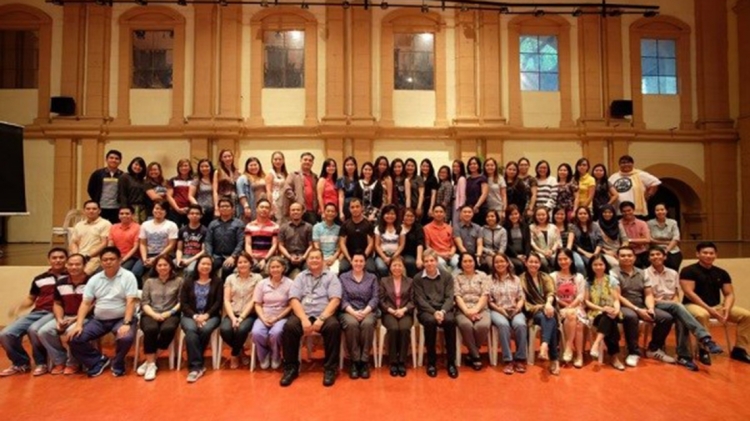Medical physicists play a key role in improving the quality of health care delivery and ensuring patient safety in radiation medicine. For medical physics practitioners in the Asia and the Pacific region, the expansion of technically sophisticated radiotherapy services and the strengthening of safety requirements presents a challenge: how best to keep pace with these changing technologies to deliver the highest standard of care to patients?
To help its Member States improve the breadth and effectiveness of medical physics education and training, the IAEA launched a four-year technical cooperation (TC) programme regional project[1] in 2014. At a project review meeting in Depok, Indonesia from 2 to 6 October 2017, representatives of participating countries analyzed the results of project initiatives and developed strategies for future projects in the field.
The project, developed by the Regional Cooperative Agreement for Research, Development and Training Related to Nuclear Science and Technology for Asia and the Pacific (RCA), comprised a series of activities. First, national and regional needs and existing resources for sustainable medical physics training and education were evaluated through a survey questionnaire and a gap analysis. Throughout 2015, common standards for education and clinical training were established through a series of technical meetings. These standards were then published on the IAEA website, together with a common statement on what constitutes a qualified medical physicist and proposals for these criteria to be adopted nationally or regionally by means including professional recognition by appropriate regulatory authorities, government bodies, professional bodies and other stakeholders.
The project contributed directly to increasing the number of clinical training programmes in the region through the establishment of an IAEA e-learning platform called AMPLE (Advanced Medical Physics Learning Environment). Pilots of clinical training programmes using AMPLE were established in Bangladesh, Thailand, Philippines, Singapore, India and Indonesia, allowing medical physicists to learn from regional centres with more experience.
In line with project objectives, Member States implemented the tools provided to build capacity among their medical physics workforces. Myanmar founded the Myanmar Medical Physicists Association (MMPA) in 2015, drawing on the standards established by the project. MMPA also contributed to the development of a four-year Radiation Technologist Bachelor Programme as part of the education and training programme for radiation technologists at the University of Medical Technology, Yangon, with an annual intake of approximately 10 students. Nepal is also applying these new standards to staff training, ahead of the planned procurement of three new radiotherapy machines in 2018.
Meeting participants agreed that closer cooperation with international institutions such as the Asia-Oceania Federation of Organizations for Medical Physics, the Association of Southeast Asian Nations (ASEAN) College of Medical Physics, the International Organization for Medical Physics, the International Medical Physics Certification Board and the International Centre for Theoretical Physics could enhance the outcomes of future projects in medical physics. They also resolved to inform these institutions of project activities.
Participating governments are expected to encourage the creation of sufficient medical physicist positions in health care institutions using radiation devices and radionuclides, and to provide educational and financial support for graduate education and training in medical physics. For its part, the IAEA will continue to support the strengthening of medical physics across RCA Member States, including through a follow-up technical cooperation regional project[2], delivered in collaboration with RCA.
[1] RAS6077 ‘Strengthening the Effectiveness and Extent of Medical Physics Education and Training’. Components of this project are funded through the IAEA’s Technical Cooperation Fund, and through extrabudgetary contributions from Australia and Japan.
[2] RAS6087 'Enhancing Medical Physics Services in Developing Standards, Education and Training through Regional Cooperation (RCA)'




